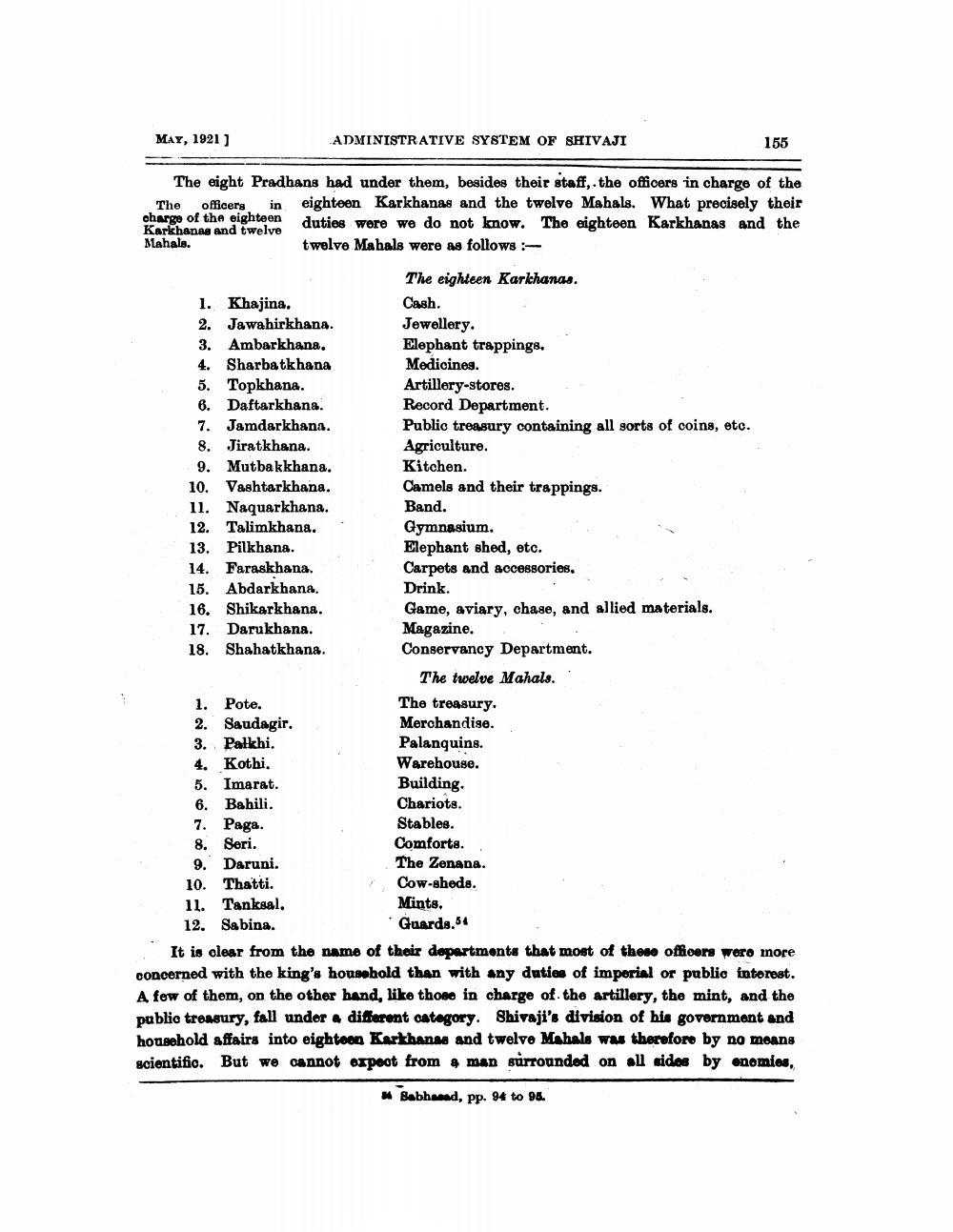________________
MAY, 1921]
ADMINISTRATIVE SYSTEM OF SHIVAJI
155
The eight Pradhans had under them, besides their staff, the officers in charge of the The officers in eighteen Karkhanas and the twelve Mahals. What precisely their Karkhanas and twelve
en duties were we do not know. The eighteen Karkhanas and the
wo wo Mahals.
twelve Mahals were as follows:
The eighteen Karlchanas. 1. Khajina.
Cash. 2. Jawahirkhana. Jewellery. 3. Ambarkhana.
Elephant trappings. 4. Sharbatkhana
Medicines. 5. Topkhana.
Artillery-stores. 6. Daftarkhana.
Record Department. 7. Jamdarkhana.
Public treasury containing all sorts of coins, etc. 8. Jiratkhana.
Agriculture. 9. Mutbakkhana. Kitchen. 10. Vashtarkhana.
Camels and their trappings. 11. Naquarkhana.
Band. 12. Talimkhana.
Gymnasium. 13. Pilkhana.
Elephant shed, etc. 14. Faraskhana.
Carpets and accessories, 15. Abdarkhana.
Drink. 16. Shikarkhana.
Game, aviary, chase, and allied materials. 17. Darukhana.
Magazine. 18. Shahatkhana.
Conservancy Department.
The twelve Mahals. 1. Pote.
The treasury, 2. Saudagir.
Merchandise. 3. Palkhi.
Palanquins. 4. Kothi.
Warehouse. Imarat.
Building. 6. Bahili.
Chariots. Paga.
Stables. Seri.
Comforts. 9. Daruni.
The Zenana. 10. Thatti.
Cow-gheds. 11. Tanksal,
Mints, 12. Sabina.
Guards.34 It is clear from the name of their departments that most of these officers wero more concerned with the king's household than with any duties of imperial or publie interest. A few of them, on the other hand, like those in charge of the artillery, the mint, and the public treasury, fall under a diferent category. Shivaji's division of his government and household affairs into eightoon Karthanas and twelve Mahals was therefore by no means scientific. But we cannot expect from e man surrounded on all sides by onomies,
* Babhread, pp. 94 to 94.




